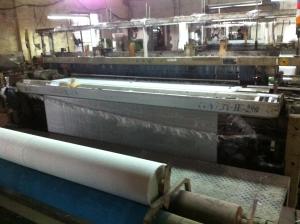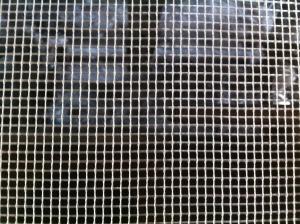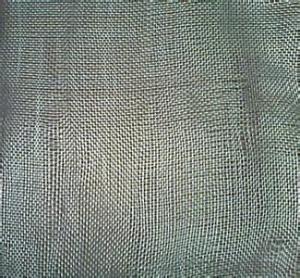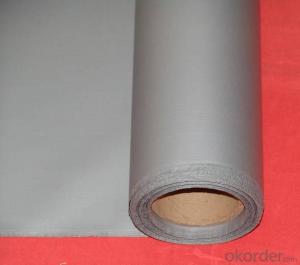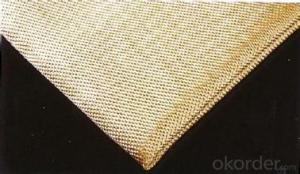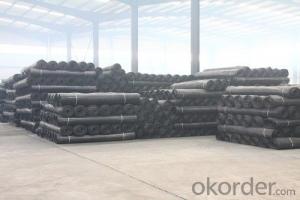FIBER GLASS GRINDING WHEEL CLOTH
- Loading Port:
- Shanghai
- Payment Terms:
- TT OR LC
- Min Order Qty:
- -
- Supply Capability:
- 200吨 m.t./month
OKorder Service Pledge
Quality Product, Order Online Tracking, Timely Delivery
OKorder Financial Service
Credit Rating, Credit Services, Credit Purchasing
You Might Also Like
fiber glass
| Specifications of fiberglass cloth for grinding wheel | ||||||||
| style | tex | inch | (N/50mm) tensile strength | weave | ||||
| (g/㎡)weight | warp | fill | warp | fill | warp | fill | ||
| CG85-14 | 85±5% | 44×2 | 66 | 14±0.5 | 14±0.5 | ≥900 | ≥700 | Leno |
| CG125-14 | 125±5% | 66×2 | 99 | 14±0.5 | 14±0.5 | ≥1300 | ≥1300 | Leno |
| CG125-8 | 125±5% | 99×2 | 198 | 8±0.5 | 8±0.5 | ≥1000 | ≥1000 | Leno |
| CG130-7×6 | 130±5% | 132×2 | 264 | 7±0.5 | 6±0.5 | ≥1200 | ≥1100 | Leno |
| CG160-5 | 160±5% | 198×2 | 396 | 5±0.5 | 5±0.5 | ≥1300 | ≥1300 | Leno |
| CG190-6 | 190±5% | 198×2 | 396 | 6±0.5 | 6±0.5 | ≥1500 | ≥1500 | Leno |
| CG235-8×6 | 235±5% | 198×2 | 495 | 8±0.5 | 66±0.5 | ≥2100 | ≥1900 | Leno |
| CG260-5 | 260±5% | 330×2 | 660 | 5±0.5 | 5±0.5 | ≥2200 | ≥2200 | Leno |
| CG320-5×4 | 320±5% | 330×2 | 1200 | 5±0.5 | 4±0.5 | ≥2600 | ≥2600 | Leno |
| CG380-5×4 | 380±5% | 528×2 | 1200 | 5±0.5 | 4±0.5 | ≥3200 | ≥2600 | Leno |
| CP145-14 | 145±5% | 132 | 132 | 14±0.5 | 14±0.5 | ≥1500 | ≥1500 | Plain |
| CP220-8 | 220±5% | 396 | 396 | 8±0.5 | 8±0.5 | ≥2200 | ≥1800 | Plain |
| CP260-8 | 260±5% | 396 | 396 | 8±0.5 | 8±0.5 | ≥2200 | ≥2200 | Plain |
| CP330-8 | 330±5% | 528 | 528 | 8±0.5 | 8±0.5 | ≥2900 | ≥2900 | Plain |
| CP420-8 | 420±5% | 660 | 660 | 8±0.5 | 8±0.5 | ≥3500 | ≥3500 | Plain |
| CP250-9 | 250±5% | 352 | 352 | 9±0.5 | 9±0.5 | ≥2000 | ≥2000 | Plain |
| CP275-9 | 275±5% | 396 | 396 | 9±0.5 | 9±0.5 | ≥2300 | ≥2300 | Plain |
| CP300-9 | 300±5% | 440 | 396 | 9±0.5 | 9±0.5 | ≥2800 | ≥2600 | Plain |
| CP260-11 | 260±5% | 297 | 297 | 11±0.5 | 11±0.5 | ≥2200 | ≥2200 | Plain |
| CP330-11 | 330±5% | 396 | 396 | 11±0.5 | 11±0.5 | ≥2900 | ≥2900 | Plain |
| CP180-18 | 180±5% | 132 | 132 | 18±0.5 | 18±0.5 | ≥1900 | ≥1900 | Plain |
- Q:Can fiberglass fabric be used for reinforcement in wind turbine blades?
- Fiberglass fabric is a viable option for reinforcing wind turbine blades. It is a commonly utilized material in wind turbine blade construction because it possesses a high strength-to-weight ratio, durability, and resistance to corrosion. The fabric is typically composed of layers of woven or non-woven fiberglass fibers that are saturated with resin to create a composite material. This composite is then employed to fortify the structure of the wind turbine blades, granting them the necessary strength and rigidity to endure the dynamic loads and stresses encountered during operation. In addition, fiberglass fabric can be easily shaped into intricate forms, making it suitable for meeting the aerodynamic design prerequisites of wind turbine blades. All in all, fiberglass fabric is a favored option for reinforcing wind turbine blades due to its mechanical properties and manufacturing adaptability.
- Q:Can fiberglass fabric be used for reinforcement in plastic tanks?
- Yes, fiberglass fabric can be effectively used for reinforcement in plastic tanks. Its high strength-to-weight ratio and excellent resistance to corrosion and chemicals make it an ideal material for reinforcing plastic tanks, improving their structural integrity and durability.
- Q:How is fiberglass fabric repaired?
- Fiberglass fabric can be repaired using a few different methods, depending on the extent of the damage. One common method is using epoxy resin and a fiberglass repair kit. First, the damaged area is cleaned and sanded to remove any loose fibers or debris. Then, a piece of fiberglass fabric is cut to size and placed over the damaged area. Epoxy resin is applied to both the fabric and the damaged area, and then the fabric is laid over the damaged area and pressed down to ensure a good bond. Excess resin is removed, and the repair is left to cure according to the instructions on the resin kit. Another method of repairing fiberglass fabric is using a heat gun. This is typically used for minor repairs such as small holes or tears. The heat gun is used to warm up the damaged area, which softens the fiberglass fabric and allows it to be stretched and smoothed out. Once the fabric is smooth and in place, it can be secured using a suitable adhesive or epoxy resin. For larger or more complex repairs, it may be necessary to seek professional help or consult the manufacturer's guidelines. It's important to follow proper repair procedures to ensure a strong and durable repair.
- Q:Can fiberglass fabric be used for making luggage?
- Indeed, luggage can be manufactured using fiberglass fabric. Renowned for its durability and strength, fiberglass fabric proves to be an optimal material for withstanding rough handling and frequent use. Its lightweight nature, coupled with sturdiness, facilitates effortless maneuvering of the luggage, all the while ensuring the safeguarding of its contents. Moreover, fiberglass fabric exhibits resistance to water and stains, rendering it a pragmatic selection for luggage that might encounter diverse weather conditions. All in all, fiberglass fabric presents a dependable and enduring alternative for luggage production.
- Q:What is the typical width of fiberglass fabrics?
- The typical width of fiberglass fabrics can vary depending on the specific application and manufacturer. However, standard widths for fiberglass fabrics range from 36 to 60 inches (91-152 cm). These widths are commonly used in industries such as aerospace, automotive, construction, and marine. It is important to note that custom widths can also be produced for specific requirements if needed.
- Q:Is fiberglass fabric resistant to insects?
- Yes, fiberglass fabric is generally resistant to insects. Fiberglass is made from woven strands of glass fibers, which insects are not attracted to or able to consume. Additionally, fiberglass fabric does not provide a suitable environment for insects to nest or breed, as it is non-porous and does not retain moisture. This makes it a popular choice for insect screens and protective covers, as it effectively keeps insects out without the need for chemical insecticides. However, it is important to note that while fiberglass fabric itself is resistant to insects, the seams and openings in the fabric may still allow insects to enter. Therefore, proper installation and maintenance are necessary to ensure complete insect resistance.
- Q:What's the difference between an epoxy resin board and an electric wood board?
- The physical properties such as hardness plate, epoxy resin plate with electric plank to big, bending strength, heat resistance is excellent, wood is more suitable for cold punching; three different electrical properties, such as surface / volume resistance of epoxy resin board performance is better.
- Q:Are fiberglass fabrics biodegradable?
- No, fiberglass fabrics are not biodegradable.
- Q:How do fiberglass fabrics perform in terms of dimensional stability?
- Fiberglass fabrics are known for their excellent dimensional stability. They have a low coefficient of thermal expansion, meaning they do not significantly expand or contract with changes in temperature. This property ensures that fiberglass fabrics maintain their shape and size, making them highly reliable for various applications where dimensional stability is crucial.
- Q:Is fiberglass fabric resistant to chemicals in laboratories?
- Yes, fiberglass fabric is generally resistant to chemicals in laboratories. Fiberglass is a synthetic material made from fine fibers of glass, and it is known for its excellent chemical resistance. It is highly resistant to most acids, alkalis, solvents, and other chemicals commonly used in laboratory settings. This resistance makes fiberglass fabric a suitable choice for various applications in laboratories where exposure to chemicals is a concern. However, it is important to note that the specific chemical resistance of fiberglass fabric may vary depending on the type and concentration of the chemicals involved. Therefore, it is always recommended to refer to the manufacturer's specifications or consult with experts to ensure the compatibility of fiberglass fabric with specific chemicals in a laboratory setting.
1. Manufacturer Overview |
|
|---|---|
| Location | |
| Year Established | |
| Annual Output Value | |
| Main Markets | |
| Company Certifications | |
2. Manufacturer Certificates |
|
|---|---|
| a) Certification Name | |
| Range | |
| Reference | |
| Validity Period | |
3. Manufacturer Capability |
|
|---|---|
| a)Trade Capacity | |
| Nearest Port | |
| Export Percentage | |
| No.of Employees in Trade Department | |
| Language Spoken: | |
| b)Factory Information | |
| Factory Size: | |
| No. of Production Lines | |
| Contract Manufacturing | |
| Product Price Range | |
Send your message to us
FIBER GLASS GRINDING WHEEL CLOTH
- Loading Port:
- Shanghai
- Payment Terms:
- TT OR LC
- Min Order Qty:
- -
- Supply Capability:
- 200吨 m.t./month
OKorder Service Pledge
Quality Product, Order Online Tracking, Timely Delivery
OKorder Financial Service
Credit Rating, Credit Services, Credit Purchasing
Similar products
New products
Hot products
Hot Searches
Related keywords

